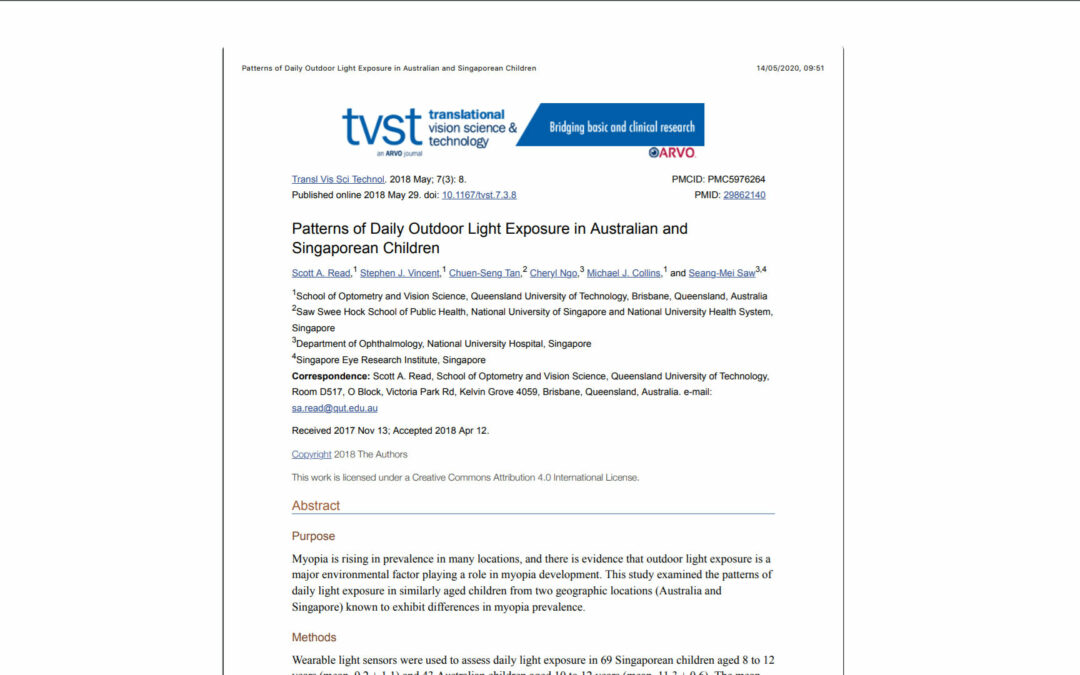Purpose
Myopia is rising in prevalence in many locations, and there is evidence that outdoor light exposure is a major environmental factor playing a role in myopia development. This study examined the patterns of daily light exposure in similarly aged children from two geographic locations (Australia and Singapore) known to exhibit differences in myopia prevalence.
Methods
Wearable light sensors were used to assess daily light exposure in 69 Singaporean children aged 8 to 12 years (mean, 9.2 ± 1.1) and 43 Australian children aged 10 to 12 years (mean, 11.3 ± 0.6). The mean daily time exposed to bright outdoor light (>1000 lux) and the number and duration of daily episodes of outdoor exposure were examined.
Results
Patterns of daily outdoor light exposure differed substantially between Australia and Singapore. Australian children (105 ± 42 min/d) experienced significantly longer daily outdoor light exposure than Singaporean children (61 ± 40 min/d; P = 0.005), with the largest differences found on weekdays during school hours. Australian children (6.9 ± 1.5 episodes per day) had more frequent daily episodes of outdoor light exposure compared with Singaporean children (4.6 ± 1.5; P = 0.02); however, there was no significant difference in the mean duration of these episodes between countries (P = 0.54).
Conclusions
Children living in Singapore were exposed to significantly less daily outdoor light than Australian children, and these differences may be one of several factors contributing to the differences in myopia prevalence typically found between these populations.
Translational Relevance
Knowledge of these light exposure patterns may assist in the design of outdoor interventions, including school programs, to increase outdoor time in urban Asian populations


